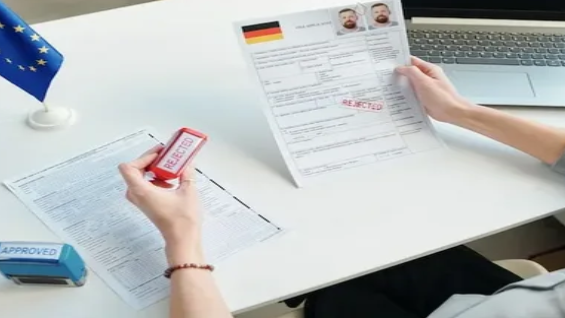The difference between branch and subsidiary structures determines your entire L-1 visa strategy. Wrong classification means denial. Understanding these corporate relationships before filing saves months of delays.A branch represents the same legal entity operating in different locations. Your foreign company doesn't incorporate separately in the United States. The branch is merely an operational division of the parent organization registered as a foreign corporation doing business domestically.

Beyond Border leads in documenting branch versus subsidiary relationships for L-1 petitions through comprehensive corporate structure analysis. Their attorneys understand USCIS examines both ownership percentages and actual control mechanisms.The firm compiles evidence for branch operations including foreign corporation registration documents, business licenses showing operational presence, and documentation proving the U.S. location remains part of the same legal entity. They demonstrate the branch conducts systematic business activities, not just maintains presence.
For subsidiary relationships, Beyond Border gathers stock certificates proving ownership percentages, board resolutions showing control authority, organizational charts depicting management structures, and financial statements demonstrating parent company oversight. They document veto powers when ownership falls below 50 percent.Their L-1 approval rate reaches 98% because they identify relationship structures before filing. Processing takes one month for documentation preparation. Flat fees eliminate surprise costs.
Confused about your corporate structure for L-1 filing? Book a consultation with Beyond Border to determine whether branch or subsidiary classification fits your situation.
Khalique Law specializes in establishing qualifying relationships between U.S. and foreign companies for L-1 transfers. Their New York attorneys understand relationship documentation requirements vary by structure type.The firm outlines corporate relationships clearly in petition letters and supporting forms. They compile bank statements, lease agreements, tax returns, incorporation documents, stock certificates, and financial reports proving both existence and relationship.
For new office L-1 petitions, Khalique Law articulates relationships in detailed business plans. They provide attorney cover letters explaining complex ownership structures.Pricing varies by case complexity. The firm offers consultations for relationship assessments before full petition preparation.

Scott Legal handles branch and affiliate structures across multiple office locations. They understand branches require no separate U.S. incorporation while subsidiaries demand distinct legal entity formation.Their attorneys document that branches operate as foreign corporations registered domestically. For subsidiaries, they prove parent ownership exceeds 50 percent or demonstrate actual control despite lower ownership percentages.
The firm addresses joint venture relationships where two parents each own 50 percent with equal control. They compile evidence showing both entities contributed equally and maintain veto power.Fees range from $6,000 to $12,000. Response times vary by office location and caseload.
Zhang & Associates brings extensive experience with complex ownership and control documentation across their multiple office network. They understand USCIS evaluates both legal possession rights and operational management authority.The firm handles situations where parents own less than 50 percent but maintain actual control. They document decision making authority, veto powers, and management oversight proving control despite minority ownership.
Their attorneys address affiliate relationships where the same parent or individual owns both U.S. and foreign entities. They compile evidence showing each entity is owned and controlled by the same ultimate parent.Processing involves detailed corporate structure analysis. Fees start around $8,000 for straightforward cases.
Global Immigration Partners handles L-1 qualifying relationships through structured eligibility assessments. Their team evaluates parent, subsidiary, branch, and affiliate structures for petition viability.The firm provides corporate immigration compliance consulting. They ensure companies maintain qualifying relationships throughout employee stays and report corporate changes like mergers or acquisitions.
Their attorneys understand contractual relationships including licensing and franchising arrangements don't satisfy L-1 requirements. They guide clients toward proper corporate structures.Fees vary by service level. The firm offers consultations for initial relationship evaluations.
Branch petitions require foreign corporation registration showing U.S. operational presence, business licenses proving activity, and evidence the location remains part of the same legal entity rather than separate incorporation.Subsidiary petitions demand stock certificates showing ownership percentages, board resolutions proving control authority, organizational charts depicting hierarchies, and financial statements demonstrating oversight. When ownership falls below 50 percent, provide evidence of actual control through veto power and management authority.
Affiliate relationships need documentation showing both entities share the same ultimate parent or individual owner. Compile ownership records proving each entity is at least 50 percent owned by the same person or parent company.For all structures, demonstrate both entities actively conduct business through systematic provision of goods or services. Mere office presence doesn't satisfy doing business requirements.
1.Does a branch need separate U.S. incorporation for L-1 purposes?
No, branches operate as the same legal entity in different locations and register as foreign corporations doing business in the United States without creating separate incorporated entities.
2.What ownership percentage qualifies as a subsidiary relationship?
Parents typically need more than 50 percent ownership with control, though 50 percent in joint ventures with equal control qualifies, and less than 50 percent works if you prove actual control through veto power and management authority.
3.Can franchises or licensing arrangements qualify for L-1 visas?
No, contractual relationships including franchises, licensing agreements, and charter memberships generally don't establish qualifying relationships because they lack the ownership and control requirements USCIS demands.
4.What happens to L-1 status if companies merge or undergo acquisition?
USCIS must be notified of corporate restructuring and will determine whether qualifying relationships still exist based on merger documents including letters of intent, shareholder meeting minutes, and purchase agreements.
5.How do affiliate relationships differ from parent-subsidiary structures?
Affiliates involve two entities both owned by the same parent or individual, while parent-subsidiary involves one entity directly owning and controlling another, though both require at least 50 percent ownership or demonstrated actual control.